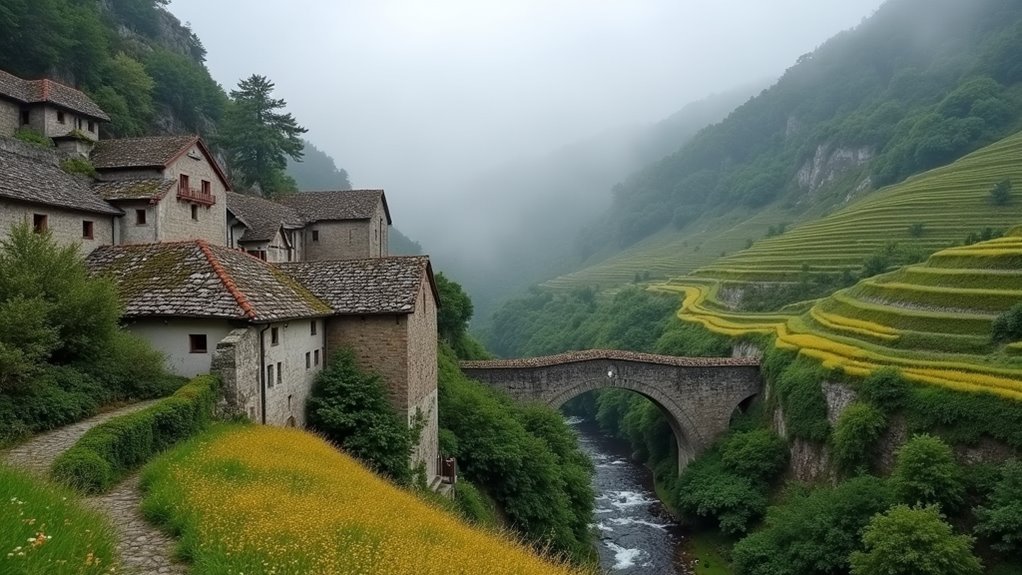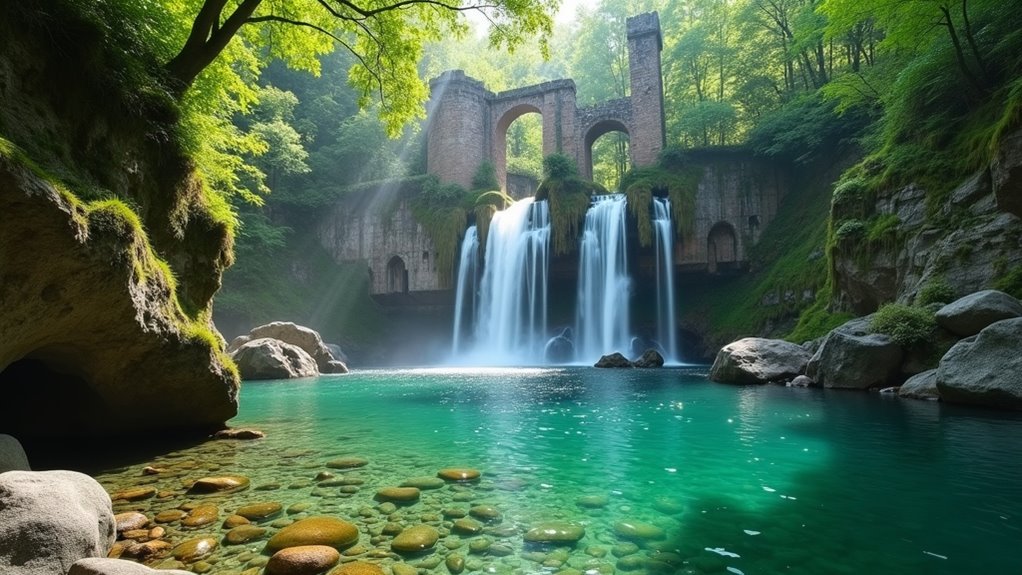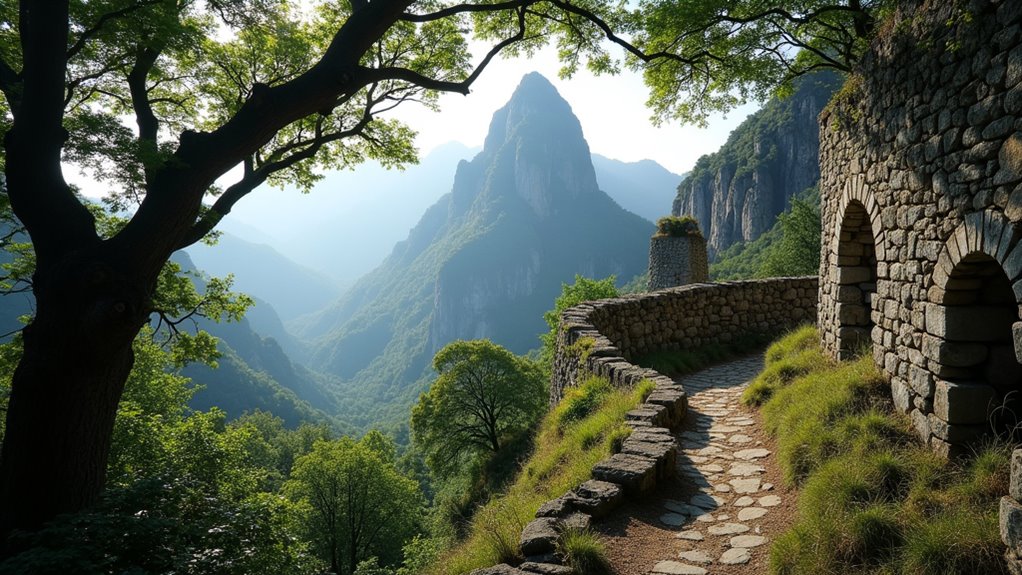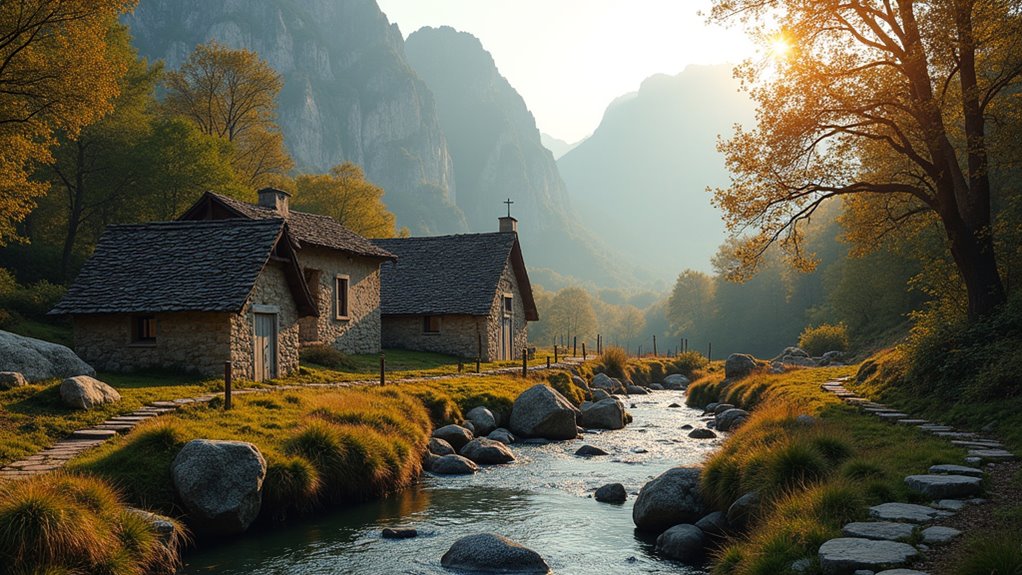Physical Address
304 North Cardinal St.
Dorchester Center, MA 02124
Physical Address
304 North Cardinal St.
Dorchester Center, MA 02124

Journey through Portugal's Peneda Gerês where Bronze Age ruins meet wild wolves, but timing your visit wrong could cost you dearly.
You probably didn’t know that Portugal’s Peneda Gerês National Park houses Bronze Age settlements alongside some of Europe’s last wild Iberian wolf packs. This isn’t your typical choose-between-nature-or-culture destination – you’ll find ancient Roman roads threading through pristine oak forests and medieval monasteries perched above cascading waterfalls. What’s even better is that you can experience both worlds without breaking the bank, but there’s a strategic approach that’ll maximize your time and minimize your costs.

While modern Portugal bustles with contemporary life, you’ll discover something extraordinary when you venture into Peneda Gerês National Park’s remote villages—communities that haven’t changed much in centuries.
You’ll find granite houses with slate roofs, perfectly preserved stone granaries called espigueiros, and ancient threshing floors still used today.
Visit Soajo and Lindoso to see the most impressive collections of these traditional granaries. They’re free to explore and make incredible photo opportunities.
In Castro Laboreiro, you’ll walk cobblestone streets between homes built entirely from local stone.
Don’t miss Pitões das Júnias, where monks once lived. The village costs nothing to wander, and you’ll experience authentic Portuguese mountain culture.
Pack comfortable walking shoes—these ancient pathways weren’t designed for modern footwear.
For adventurous travelers seeking more rugged terrain, consider exploring America’s glacier climbing trails which offer some of the most challenging and spectacular alpine experiences available.
Beyond the medieval villages lies an even older layer of history waiting for your discovery. You’ll find well-preserved Roman roads crisscrossing the park, including sections of the ancient Via Nova that connected Braga to Astorga. These stone-paved paths are free to explore and offer fantastic photo opportunities without entrance fees.
Don’t miss the Bronze Age settlements scattered throughout the region. The Castro de Calcedónia near Lindoso showcases circular stone foundations from over 2,000 years ago. You can access most archaeological sites without guided tours, saving money while exploring at your own pace.
If you’re planning extended explorations of remote archaeological areas, consider whether renting or buying a boat might enhance your access to waterside historical sites along the park’s reservoirs and rivers.
Bring comfortable hiking boots since many sites require short walks on uneven terrain. Download offline maps beforehand to navigate without using expensive mobile data while discovering these ancient treasures.

After exploring ancient ruins, Portugal’s pristine waterways will invigorate your spirit and cool you down on hot summer days. You’ll discover dozens of waterfalls throughout Peneda Geres, with Cascata do Arado being the most accessible and Instagram-worthy. It’s a short 20-minute hike from the parking area, and you won’t need special equipment or guides.
The Lagoa Comprida offers crystal-clear swimming without entrance fees. Pack your own lunch since there aren’t restaurants nearby, and you’ll save money while enjoying better views. Don’t miss the secluded pools near Ermida village – locals swim here, so you know the water’s safe and revitalizing.
Visit early morning or late afternoon for the best lighting and fewer crowds. Bring water shoes since some rocky areas can be slippery. After a refreshing day by the water, gather around the campfire for some entertaining campfire games that will create lasting memories with your travel companions.
Where else can you spot Europe’s most elusive predators roaming freely in their natural habitat? Peneda Geres offers exceptional wildlife watching without expensive safari fees.
You’ll find Iberian wolves prowling the remote valleys, though patience is essential—they’re naturally shy. Your best chances come during early morning or late evening hours when they’re most active.
The park’s wild Garrano horses are easier to spot, grazing openly across mountain plateaus. These hardy ponies have roamed here for centuries, perfectly adapted to the rugged terrain.
Bring binoculars and pack snacks for extended observation sessions—you won’t find overpriced park concessions here.
Focus on the Castro Laboreiro area for wolves, while horses frequent the Mourela plateau.
If you plan to camp overnight for better wildlife viewing opportunities, remember that proper campfire building techniques are essential for both safety and preserving the park’s pristine environment.

While wolves and horses capture most visitors’ attention, Peneda Geres‘ hiking trails deliver the park’s real treasure—access to ancient granite formations and centuries-old oak forests without entrance fees or crowded boardwalks.
Beyond the wildlife spectacle lies Peneda Geres’ true gem—pristine trails threading through ancient granite and oak groves, completely free from tourist traps.
You’ll find well-marked trails starting from villages like Soajo and Lindoso. The Trilho da Águia Careca leads you through dense oak groves where sunlight filters through centuries-old canopies.
For granite enthusiasts, tackle the route to Pedra Bela—you’ll scramble over weathered boulders while enjoying panoramic views.
Pack water and snacks since facilities are scarce once you’re on the trails. Download offline maps beforehand; cell service disappears quickly.
Spring through fall offers ideal conditions, though summer brings heat and crowds. Early morning starts give you cooler temperatures and better wildlife spotting opportunities.
Whether you prefer adventure camping or simply relaxing in nature, these trails accommodate different comfort levels and outdoor experiences.
Though most visitors come for the natural scenery, Peneda Geres’ scattered medieval monasteries offer compelling glimpses into Portugal’s religious past—and they won’t cost you a euro to explore.
You’ll find the ruins of Santa Maria das Júnias monastery nestled in a valley near Pitões das Júnias village. It’s easily accessible by foot and features remarkably preserved Romanesque architecture from the 12th century. The atmospheric stone walls make for dramatic photos.
Don’t miss the Chapel of São Bento da Porta Aberta, Portugal’s most visited pilgrimage site. You can drive directly there, though parking gets crowded on weekends. The chapel’s white façade contrasts beautifully against the surrounding mountains.
Pack water and snacks since you won’t find vendors at these remote locations. Early morning visits offer the best lighting and fewer crowds.
If you’re planning to explore multiple monasteries with your family, consider setting up base camp nearby since these family camping adventures let you experience both the spiritual heritage and natural beauty at a more relaxed pace.

Since Peneda Geres doesn’t operate on a typical tourist season schedule, you’ll want to time your visit around weather patterns rather than crowds. Spring and early fall offer the perfect balance of mild temperatures and accessible trails.
Main Access Points:
You’ll find the most affordable lodging in surrounding villages rather than within the park itself. Pack layers since mountain weather changes quickly, and don’t forget sturdy hiking boots for exploring those medieval monastery ruins. Similar to Australia’s outdoor adventures, Portugal offers incredible opportunities for bushwalking enthusiasts to connect with nature through well-maintained trail systems.
You’ll discover that Peneda Geres isn’t just a destination—it’s a time machine that’ll transport you through centuries of Portuguese history while nature shows off around every corner. Pack comfortable hiking boots, bring a camera, and don’t forget snacks since you’ll be exploring for hours. Visit during shoulder seasons for fewer crowds and better prices. This incredible park offers the adventure of a lifetime without breaking your budget, making it Portugal’s best-kept secret.